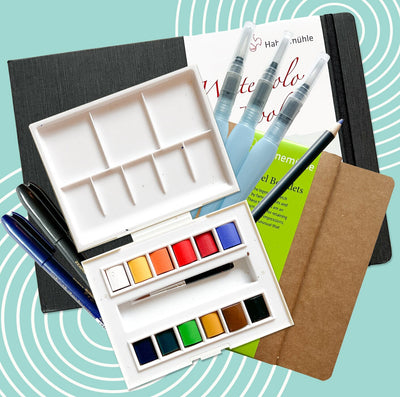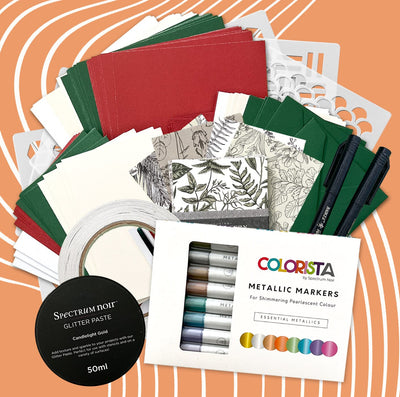From Flipbooks to Film: How Movies Got Their Start
By Amy Hand
Happy March everyone! I hope you’re hyped and ready to go switch this month’s box. I must say I was excited myself when I found out we were exploring flipbooks this month so I bet you are too! If you’re anything like me you used to draw these in the corners of your schoolbooks when you were meant to be paying attention. Hopefully your flipbooks this month are a little more ambitious than those.
For today’s blog post, I want to take you back and show you how the humble little flipbooks that we’re all going to be making this month were, in fact, the way that animation, as we know it today, got its start.
So let’s take a dive into the history books and see where it all started.
How Flipbooks Came to Be
In the beginning…before Elsa went into the unknown, before Shrek demanded we get out of his swamp, even before Dumbo took flight; there were flipbooks.
As you can see in our brochure this month, the flipbook was created by John Barnes Linnett in 1868. It was known as the kineograph, which literally means “moving picture,” and this was the first instance of using a linear booklet to make your animations. Prior to this, there has been another technique to animate frame by frame which used a circle that spun to make it appear as if a character was walking along. This was called the phenakistoscope and while it was very intelligent, it was not able to be adapted to longer cartoons due to its limited circumference. Linnett’s creation found a way to work in a linear fashion which is what you need when you’re making a full-length feature film.
The artist would start with a scene at the back of their books and, page by page, using a tracing process they would draw in each page, slightly adjusting each one to create a fluid sequence. Then you could bring the whole scene to life by flipping through the book from back to front at speed. It’s important to remember that the animation only works when flipped through it very fast, this will come up later. So simply yet, at the time, absolutely revolutionary.

For more practical details on how to make one of these yourself check out the brochure. It's chockful of good info and, as always, some prompts to inspire you to make your own little short films that you can hold in your hands.
From Flipbooks to Film
So how did we go from these rudimentary flipbooks to the beginnings of animated cartoons? Obviously, there was a lot of innovation and complicated steps in between when it came to shooting the animation but when it comes to the drawing part it remained remarkably similar.
Just like when you are making a flipbook the artists working on animation would use lightboxes and tracing paper to hand draw the picture frame by frame. Each frame was known as a cell and each cell would need to be lined and colored individually before moving onto the next infinitesimal difference in the next cell. It would take thousands of cells just to animate one scene and each one of these had to be artfully crafted by a talented artist.
The main difference between this style and flipbooks was the separation of the landscape and characters. In an animation studio, there would be a separate team for landscapes and another for the characters themselves since they required a very different style and focus. These were considered specializations that people would work their whole careers mastering. This separation allowed animators to create a feeling of depth within the 2D space that was absent in cartoons up to this point.
You would be surprised how many of the classics were drawn in this painstaking manner that would take years to complete. I feel like it's impossible to talk about the birth of animated movies without mentioning Snow White and the Seven Dwarves, which was the first animated full-length feature film in America. The entire movie was animated by hand and totaled over 200,000 separate cells that were drawn and colored by 750 artists. The movie took three years to complete from 1934 to 1937. It’s truly mind-boggling at the efforts that the pioneers of animation had to go through to get the perfect end result without computers to back them up. All of this innovation led to Snow White and the Seven Dwarves winning an honorary Academy Award for Walt Disney the year after it was nominated for Best Score.
But how were all these cells brought to life? Well, it all came about because of the multi-plane camera.

The first iteration of this camera was invented by ex-Disney animator and director Ub Iwerks using Chevrolet car parts in 1933. The most famous multi-plane camera, however, and the one that would be used to shoot Snow White was invented by William Garity, which was completed in 1937.
Remember earlier when I said flipbooks only work when flipped through very quickly? Well, the multi-plane camera works in the very same way. In very simple terms, the way the camera worked was that it passed many cells at speed in front of the camera one after the other so it read as fluidly moving characters. This was then captured on film and played back as a movie.
It may sound like there’s not a lot of room for effects when it comes to animation like this but you’d be wrong! Artists of their day discovered a few nifty little tricks that they could manipulate using the multiplane camera to create a cartoon unlike any that had been seen yet at that point. The landscape was often moved at a slower pace than the foreground to imply distance and create a distinctly dynamic feel to the film. The foreground and the landscape cells could even be moved in opposite directions to imply rotation. This was used in Snow White in the scene when the Evil Queen is turning into the old witch to great effect. That scene has a feeling of tension and magic that the filming style brought to life just perfectly. These simple practical tricks are the birthplace of more complex practical effects and computer-generated effects that we know today
It blows my mind how amazing it is that something so simple could have inspired something as complex and universally loved as animated films? From a little cartoon drawn in the corner of a notebook to an Academy Award; the capability of creative humans is truly incredible.
And that is a very simplified version of how the simple flipbooks you are all going to be crafting this month became movies that we all know and love. From these humble beginnings, animation grew in leaps and bounds until, with the help of the computer, it has become the technological marvel it is today. From 2D to 3D animation we have the simple flipbook to thank for getting the world started in the world of moving pictures.
I hope you keep these little nuggets of their history in mind while you’re making your flipbooks to inspire you to get creative and make your own mini-films using the tools in our box.
Enjoy this month’s box and we can’t wait to see what you all come up with!




